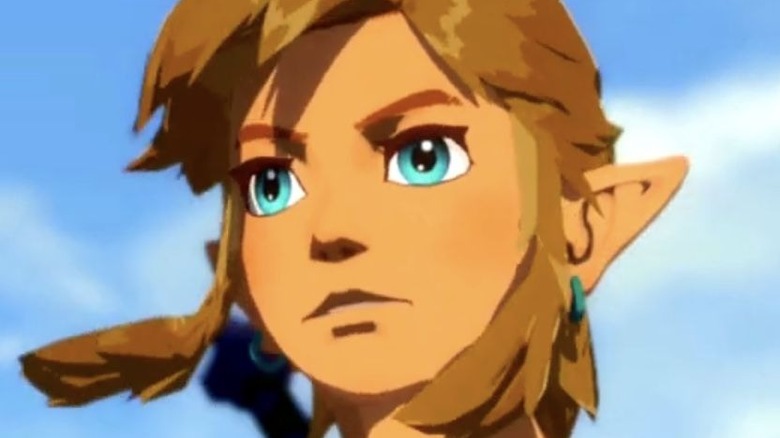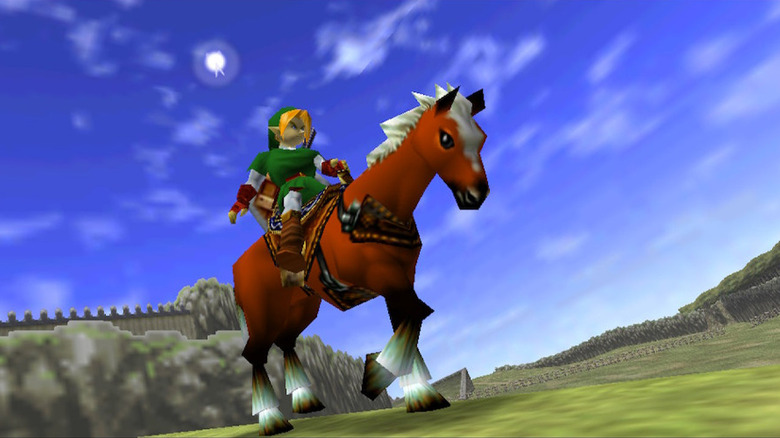Ocarina Of Time's Development Featured A Motion Capture Studio To Get Link's Animation True To Life
"Ocarina of Time" is still considered one of the best titles in the "Legend of Zelda" series and is often ranked as one of the best games of all time. The first "Legend of Zelda" game to release on the N64, it brought the series into 3D and took the franchise's first steps toward open-world gameplay. It broke new ground and set new standards for what a "Zelda" game could and should be. Looking back from the 21st century, it may not look that impressive visually, but when it was released in 1998, it was truly remarkable.
This was due, in part, to the improved graphics and processing power of the N64, which made 3D gameplay possible on Nintendo consoles for the first time. However, a great deal of credit is also owed to the hard work of the development team that spent years designing "Ocarina of Time." The team spent countless hours on details in the title in an attempt to get everything just right. And indeed, capturing the right look for the visuals was prioritized so highly that the studio used motion capture to get Link's movements as accurate as possible.
The team even considered motion capturing a live horse
In a video discussing the history and development of "Ocarina of Time," YouTuber DidYouKnowGaming? explained that producer Shigeru Miyamoto and his team pulled out all the stops to nail Link's animations and that this ultimately led them to construct their own motion capture studio. Not only that, but they also expanded and rebuilt it multiple times during production as their ambitions increased.
In an interview translated and available on Zelda Dungeon, Miyamoto discussed the motion capture work done for the game and how much time and energy was committed to the task. According to Miyamoto, the decision to invest in motion capture came after three years of trying to get the animation for Link opening a chest just right. While there was initially some resistance from Nintendo's leadership, Miyamoto and his team convinced the higher-ups to fund the effort, which ultimately paid off.
Motion capture also played a role in horse-riding animations, thanks to a wooden frame constructed for an actor to sit on. Bringing a live horse into the studio was apparently where the team decided to draw the line, though Miyamoto said it was considered.
Motion capture certainly proved worthwhile as, for the time, "Ocarina of Time" looked phenomenal and still holds a special place in the hearts of fans today.


